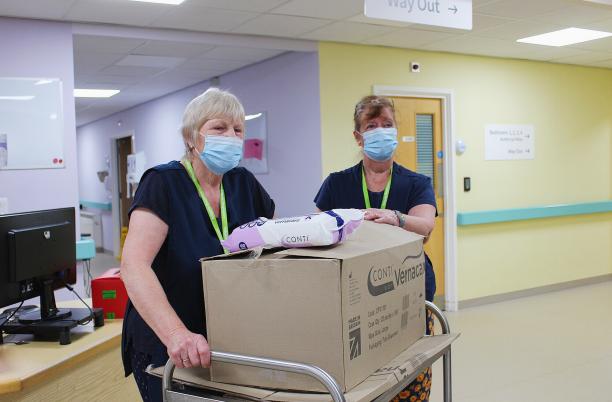

Hospice UK Chair Paul Jennings writes a commentary piece in response to the Nuffield Trust's research report, Support at the end of life: the role of hospice services across the UK.
The care that people receive at the end of their life is arguably one of the most important signifiers of how well our health and care system is working. The scenes witnessed in the early part of the Covid-19 pandemic in particular make that clear.
Paul Jennings, Chair, Hospice UK
But the fragmentation and complexity of end of life care means it has for too long been difficult to get a clear understanding of how well services are giving people and families what they need.
I’m very pleased today that, in partnership with the renowned national think tank The Nuffield Trust, Hospice UK is publishing a comprehensive analysis of the role of hospice services over the past three years. This is the first time since 2017 that we’ve had a detailed national picture of the remarkable contribution of hospices to our nation’s wellbeing.
What Nuffield Trust’s analysis tells us
Nuffield’s analysis of the data returned by hospices shows us two things very clearly. Firstly, hospices are a critical part of the UK’s health and care community. We should be as fiercely proud of our hospices as we are of our NHS.
Last year hospices provided care for almost 300,000 dying people and their families, while expanding their community services through bereavement support, welfare assistance and advice lines.
With all this work largely relying on charitable funding, this is a truly gargantuan achievement by a resilient and compassionate community of clinical staff and an equally talented set of fundraisers and other support staff. We thank you all.
Secondly, the report shows just how nimbly and effectively hospices were able to adapt their services to the pandemic. Almost a million hospice at home contacts were made last year, up from just under 750,000 two years before. There was also a significant increase in the number of people who benefited from virtual support as hospices responded to concerns from patients about attending appointments, and to reduce risk of Covid-19 infections.
Challenges
This adaptation, however, also vividly illustrates the profound questions that the end of life care sector is facing. That means not just the more than 200 hospices around the UK – but all parts of the NHS, and the social care sector too.
The pandemic drove a major shift in where patients are dying. Since March 2020 almost 1,000 additional people every week have died at home on average across the UK. This has put huge pressure on the people providing their care – and sadly, we know that many people will have missed out.
And those who are the least likely to get good care in life are also those, sadly, who we know are all too likely to miss out in death: people of colour, people from lower socioeconomic backgrounds, and people in rural communities, for example.
The reasons behind this shift in where people are dying are not completely clear. The pandemic is likely to have driven changes in patient and family choices owing to fear of infection, and visiting restrictions across hospitals, hospices and care homes will likely have been a factor. But even as the virus has ebbed and flowed, the number of deaths at home has remained consistently high.
As our colleagues at The Nuffield Trust identify, this is a long-term challenge which is certain to continue due to demography and other factors. But, the recently enacted reforms to the NHS in England, and the developing picture of integrated care elsewhere in the UK, present us with the opportunities to meet it head on.
The future
The new service models developed by hospices in the past two years provide a blueprint for future care delivered how and where people and families want it. Closer working between hospices, NHS bodies and other care services is key. The new statutory underpinning of palliative care in the 2022 Health and Care Act gives us a basis from which to build in England. There are similar positive developments in Wales, Scotland and Northern Ireland too.
Of course, challenges remain. A key challenge is ensuring we continue working together to capture and analyse patient data so we can understand where we are, and where we need to be. We need to work together across the NHS and hospice sector to collect, analyse and use data, to better equip the whole health and care system to respond to the end of life care needs and gaps of local populations. Along with this report, Hospice UK’s PopNAT tool is here to help with that.
We must all focus on achieving better data on equality, diversity and inclusion as a matter of the highest importance in steps to ensuring equity of access to care.
Paul Jennings
But as the health and care system settles into its new structures, we can be sure of one thing. The expertise, specialism and dedication of hospices and their staff can be the foundation of a future of end of life care provision.

Paul Jennings PPPH is Chair of Hospice UK. He has over 40 years of NHS experience, and has led a wide range of NHS organisations.
